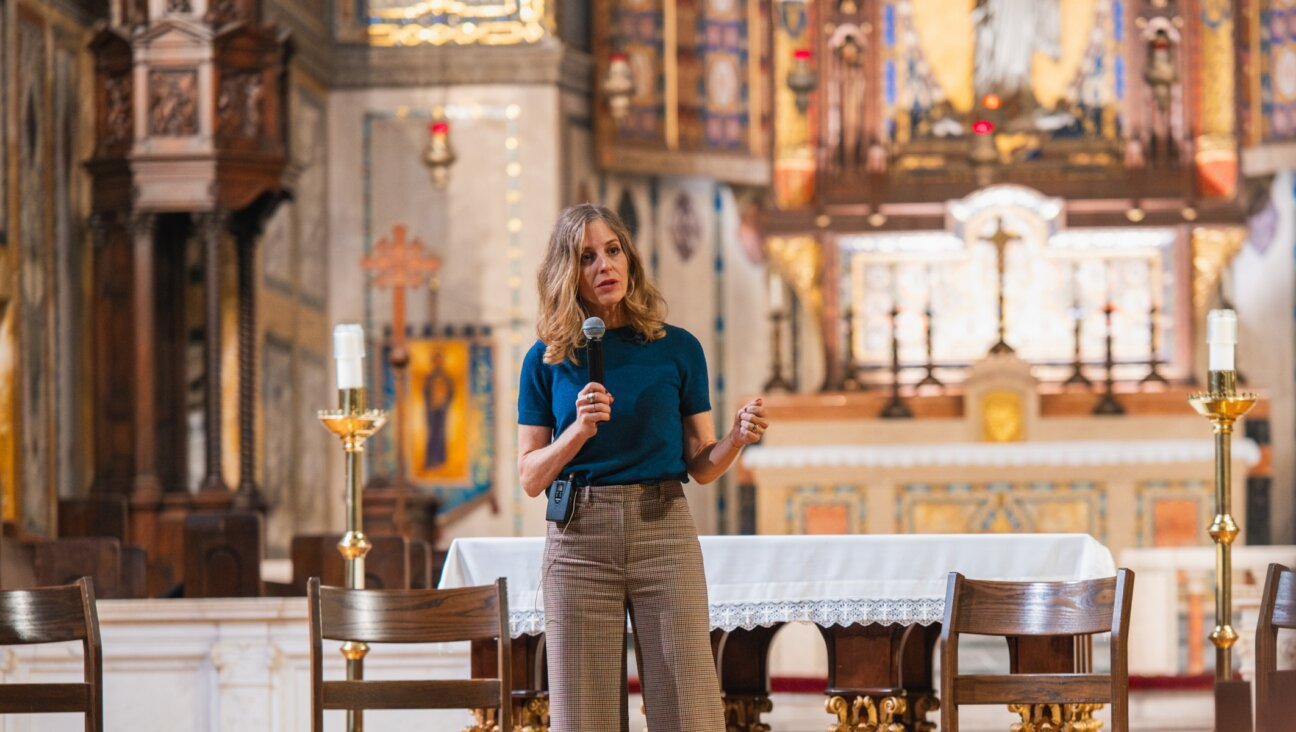Wild, Wild West
Forget about “Blazing Saddles” — there really is Jewish history in them thar hills.
Last May, I was heading to the Land of Enchantment — New Mexico — for a writing workshop and decided to indulge my curiosity about frontier Jews and their interactions with Native Americans. This is an interest I first cultivated a decade ago, when I worked at lower Manhattan’s Museum of Jewish Heritage – A Living Memorial to the Holocaust, adjacent to the Smithsonian’s National Museum of the American Indian. Back then, my officemate and I joked about co-sponsoring a screening of Mel Brooks’s 1974 classic movie with our neighboring cultural institution, but also imagined that there might be more to the intersection of these two cultures than a balding ex-Brooklynite barreling his way through wide-open spaces — and Hollywood history — wearing a feather headdress emblazoned with Hebrew letters that spelled “Kosher for Pesach.” We were right.
Thanks to Solomon Bibo there is a menorah at Acoma Pueblo, the oldest continuously inhabited community in North America. (Acoma is a straight shot 45 miles west from Albuquerque on Interstate 40, which parallels the old Route 66.) Bibo, a German-born Jew, left Brakel, Prussia, in 1869, landed in New York and made his way to Santa Fe, where his older brothers were in the dry-goods business. Bibo came to Acoma as a trader in 1882. He met and married Juana Valle, an Acoma woman, and became a tribal leader in the 1880s. He eventually moved his family to San Francisco, where his eldest son became a bar mitzvah.
The old Acoma museum (which burned down in 2000) was home to a 200-piece Bibo collection that included a Hanukkah menorah. The artifacts are currently in storage awaiting the funds necessary for restoration. Brian Vallo, director of the pueblo’s artfully renovated and newly reopened Sky City Cultural Center and Haak’u Museum, hopes that items from the Jewish family’s private and professional lives will be on display within the next five years.
But the Bibos’ story isn’t the only example of Jewish-Native American overlap in these parts: The New Mexico Holocaust & Intolerance Museum, located on Albuquerque’s Central Avenue, documents instances of inhumanity toward a wide spectrum of ethnic groups, and Santa Fe’s Cathedral Basilica of Saint Francis of Assisi has a Hebrew inscription above its entryway.
As I headed toward Santa Fe to learn more, I took the Interstate west to exit 102, which brought me to Sky City, a high-end truck stop and casino-hotel. From there I turned down the road that leads to the original Sky City, a 370-foot-high sandstone mesa in a valley studded with mushrooming monoliths. For 2,000 years, this has been the spiritual heart of the Acoma people. It’s a breathtaking sight that stirred something deep in my soul.
From Sky City, the direct route to Santa Fe takes two hours. I had scheduled a walking tour with Stephanie Beninato, whose repertoire includes one that traces the Jewish presence in New Mexico’s capital city back to 1598. We met at Starbucks, just off the main plaza, which was once home to such Jewish-owned business as Kahn’s Shoes and Bell’s Department Store. She gave me a dense half-hour course on crypto-Jews, Sephardim who masked their religion and resurfaced as Catholic Latinos who, according to Beninato, “raised pigs all their lives, but never ate them.” For a more in-depth history, she referred me to University of New Mexico professor Stanley Hordes’s definitive and riveting text, “To the End of the Earth: A History of the Crypto-Jews of New Mexico” (Columbia University Press, 2005).
Santa Fe also has a German Jewish presence that began with the Seligmans, the family that helped launch the Bibo brothers’ business and enjoyed the first indoor plumbing in a Santa Fe town that now houses an art gallery. On our way to see the sights, Beninato and I ran into third-generation Jewish New Mexican Lance Bell, a past president of the New Mexico Jewish Historical Society. Bell is proud to be raising a young daughter in his hometown and glad for the southwestern city’s Jewish boom. “When I grew up here, there was one temple; when my dad grew up, there were none,” he said. Today, Santa Fe has six congregations that span the denominational spectrum. And in December, thanks to Chabad, there is an 8-foot Hanukkah menorah in the plaza, along with public candle-lighting festivities. “If my grandparents knew,” Bell said, “they would be thrilled.”
Laura Silver is currently in Senegal through the American Jewish World Service Volunteer Corps.
A message from our Publisher & CEO Rachel Fishman Feddersen

I hope you appreciated this article. Before you go, I’d like to ask you to please support the Forward’s award-winning, nonprofit journalism during this critical time.
We’ve set a goal to raise $260,000 by December 31. That’s an ambitious goal, but one that will give us the resources we need to invest in the high quality news, opinion, analysis and cultural coverage that isn’t available anywhere else.
If you feel inspired to make an impact, now is the time to give something back. Join us as a member at your most generous level.
— Rachel Fishman Feddersen, Publisher and CEO























